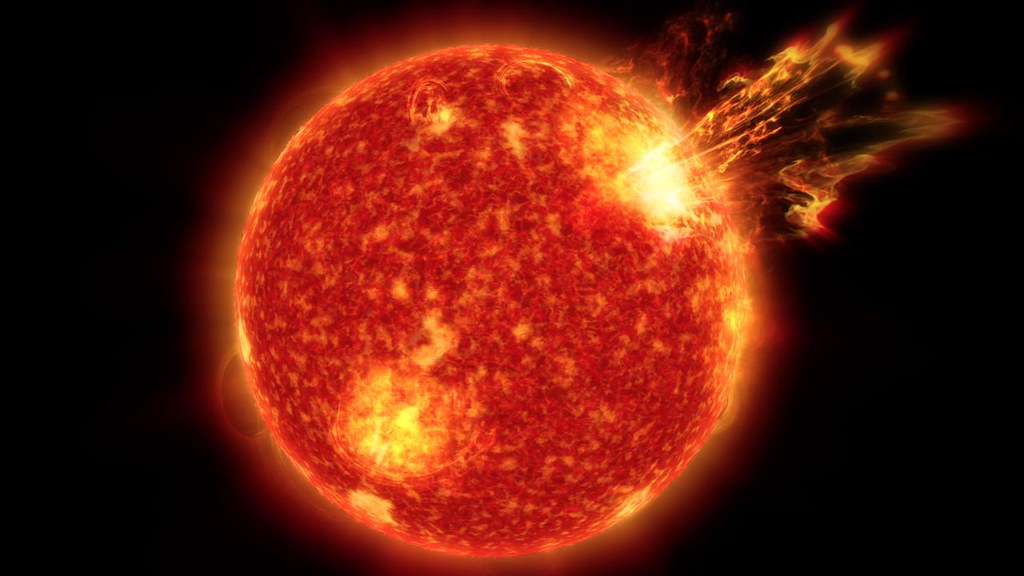Space weather forecast will be more and more important in the future. Our planet is now completely dependent on electricity and internet. Let’s imagine what could happen if suddenly our world falls in the dark. It would be a disaster. But what does that have to do with the space forecast?
In the last days the total solar eclipse and its spectacular images made the tour of the world, but the main question it’s why the scientists are so interested in this long-standing phenomenon. Because new data on sun and on solar activities could help making more accurate space forecast.
In fact, the solar activity influences also our planet and past remarkable solar events had big consequences for example on telecommunications.
Our star has a big activity, high magnetic fields generate high explosions, due to the high level of energy. This energy could be released in a moment and this energy carries billions of charged particles. This is named solar storm that produces an expulsion of coronal mass. This explosion could travel up to the Earth. The Earth has a shelter itself, the geomagnetic field, but if the solar storm is enough strong, we don’t see only boreal auroras at the poles, but more extended auroras up to the tropic and these events will cause total blackouts.

In fact, charged particles could generate important variations on geomagnetic field, and variations of a magnetic fields generate inducted currents. In this case big electric currents enter power grids, destroying electricity, gas and water distributions and internet. Furthermore, our satellites will be completely out of order. You could imagine the consequences…
The most solar event that damaged human activities date back to 1859. It is known as the Carrington event. This geomagnetic storm, peaking from 1–2 September 1859, created strong auroral displays that were reported globally and caused sparking and even fires in multiple telegraph stations. Recently proofs of this event have been discovered in polar tree rings. Uusitalo’s team (University of Helsinki) examined rings from three trees at different sites within the Lapland region of Finland, above the Arctic Circle, as well as rings from three trees from the mid-latitudes. These rings all dated between 1853 to 1871. They found a significant increase in carbon-14 in the polar trees compared with those in the mid-latitudes during the year of the Carrington event. When the charged particles encounter Earth’s magnetic field, they get deflected toward the poles. As the particles enter the stratosphere, they react with atmospheric molecules to produce carbon-14, normally produced by the interaction of cosmic rays with atmospheric nitrogen. Researchers have hypothesized that that extra burst of carbon-14 from the solar particles eventually makes its way to the Earth’s lowest atmospheric layer, the troposphere, where it is drawn into the tissue of living trees, preserving a record of the solar flare.

Another episode that affected the Quebec region, in Canada, happened in March 1989. It was a very large event that occurred at high (but not very high) latitudes and affected many people who were literally in the dark for several days.
These and similar studies prove that huge solar storm are true and not so infrequent. Recently increased boreal auroras have been observed.
Moreover, the increasing knowledge of the consequences of inducted currents on the Earth revealed that at medium and low latitudes the effects of solar storms are not observable immediately but after some time. They accelerated the decline of the power grid.
If in 1859 telegraphs were the only means of communications and means of transport didn’t require electricity, today our easy life is much more complicated.
References:
J. Uusitalo et al. Transient offset in 14C after the Carrington event recorded by polar tree rings. Geophysical Research Letters. March 16, 2024.
https://www.ingv.it/newsletter-ingv-n-8-dicembre-2019-anno-xiii/tempeste-solari-quali-sono-i-rischi-che-corriamo-sulla-nostra-terra





